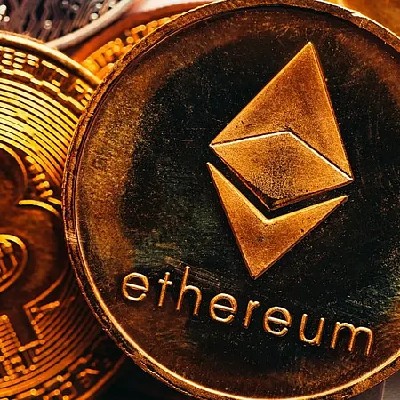


Harga RED TOKENRED
Konverter RED ke IDR
Menurut kamu, apakah harga RED TOKEN akan naik atau turun hari ini?
Tentang RED TOKEN (RED)
Sejarah Penting dan Fitur Utama Cryptocurrency
Cryptocurrency, yang juga dikenal sebagai uang digital, telah melalui perjalanan yang luar biasa sejak pertama kali muncul di dunia keuangan. Ini adalah representasi dari mata uang digital yang menggunakan kriptografi untuk mengamankan transaksi, mengontrol pembuatan unit baru, dan memverifikasi transfer aset. Lahir dari konsep desentralisasi oleh individu atau kelompok anonim yang dikenal sebagai Satoshi Nakamoto pada 2009, cryptocurrency telah benar-benar mengubah cara kita berpikir dan bertransaksi di era digital ini.
Sejarah dan Signifikansi Historis Cryptocurrency
Cryptocurrency pertama adalah Bitcoin, yang diciptakan oleh Satoshi Nakamoto yang misterius. Konsep utama yang diperkenalkan oleh Bitcoin adalah teknologi 'blockchain', yang melayani sebagai buku besar publik untuk semua transaksi Bitcoin. Sejak itu, banyak mata uang digital lain telah dibuat, dipimpin oleh Bitcoin di pasar dengan populeritas dan nilai kapitalisasi pasar.
Cryptocurrency mewujudkan gagasan 'uang digital', membawa perubahan revolusioner dalam sistem ekonomi global. Dengan cryptocurrency, pertukaran nilai dapat terjadi tanpa perantara - memotong bank dan perusahaan kartu kredit. Inovasi ini memiliki potensi untuk mengurangi biaya dan waktu transaksi, serta memberikan akses ke layanan keuangan bagi mereka yang sebelumnya tidak memiliki akses.
Fitur Utama Cryptocurrency
-
Desentralisasi: Sejauh ini fitur paling mencolok dari cryptocurrency adalah desentralisasinya. Tidak ada otoritas pusat yang mengendalikan sistem; sebaliknya, operasi diawasi oleh jaringan individu.
-
Anonimitas: Meskipun setiap transaksi dicatat dalam blockchain, pengguna masih bisa tetap anonim karena identitas mereka tidak dikaitkan langsung dengan transaksi mereka.
-
Transparansi: Dengan teknologi blockchain, semua transaksi selalu transparan dan dapat diverifikasi oleh siapa pun.
-
Kecepatan dan Ketersediaan Global: Pengguna dapat melakukan transaksi cryptocurrency kapan saja, di mana saja, asalkan mereka memiliki koneksi internet.
-
Keamanan: Penggunaan kriptografi dalam transaksi membuatnya hampir mustahil untuk diretas atau dipalsukan.
-
Pasokan Terbatas: Sebagian besar cryptocurrency memiliki jumlah unit yang terbatas, yang berarti bahwa tidak ada kemungkinan mencetak uang baru dan menyebabkan inflasi.
Dalam perjalanan panjang sejak 2009, cryptocurrency telah menunjukkan mengapa itu unik dan berharga bagi era digital saat ini dan masa depan. Saat ini masih dalam proses berkembang, tetapi signifikansi sejarah dan fitur-fitur canggih memastikan bahwa cryptocurrency akan memiliki peran yang kuat dalam dunia keuangan di masa depan.
Laporan analisis AI tentang RED TOKEN
Harga Langsung RED TOKEN Hari Ini dalam IDR
Riwayat Harga RED TOKEN (IDR)
 Harga terendah
Harga terendah Harga tertinggi
Harga tertinggi 
Berapa harga tertinggi RED TOKEN?
Berapa harga terendah RED TOKEN?
Prediksi Harga RED TOKEN
Berapa harga RED di 2026?
Berapa harga RED di 2031?
Promosi populer
FAQ
Berapa harga RED TOKEN saat ini?
Berapa volume perdagangan 24 jam dari RED TOKEN?
Berapa harga tertinggi sepanjang masa (ATH) dari RED TOKEN?
Bisakah saya membeli RED TOKEN di Bitget?
Apakah saya bisa mendapatkan penghasilan tetap dari berinvestasi di RED TOKEN?
Di mana saya bisa membeli RED TOKEN dengan biaya terendah?
Kepemilikan RED TOKEN berdasarkan konsentrasi
Alamat RED TOKEN berdasarkan waktu kepemilikan

Harga RED TOKEN Global
- 1
- 2
- 3
- 4
- 5
Harga mata uang kripto terkait
Harga koin yang baru listing di Bitget
Beli lebih banyak
Di mana saya bisa membeli kripto?
Bagian video — verifikasi cepat, trading cepat

Konverter RED ke IDR
Peringkat RED TOKEN
Insight Bitget




Info tambahan tentang RED TOKEN
Ringkasan koin
Terkait koin
Terkait perdagangan








